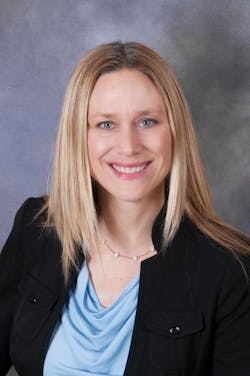Industrial Firms Seek Innovation, IoT Solutions
The slowdown in oil and gas exploration markets has created a ripples-in-the-pond effect throughout a number of industries and related product lines—especially those focused on fluid power. As the sluggish conditions persist, many firms are focused on new technologies and market diversification.
Brett Holmes is an account manager at fluid power distributor Hydraquip in Houston where they are very close to what had been the oil boom—or, more recently, oil slump.
“We are definitely down, down quite a bit,” Holmes explains. “Located here in the East Texas area, we are pretty heavily tied in with the oil and gas markets. It has been a pretty tough year-and-a-half, to say the least.”
Other companies that don’t specialize in oil and gas-related industries are also feeling the effects. Joe Gallagher, president of Gallagher Fluid Seals in King of Prussia, Pennsylvania, cites one of his customers as an example.
“We had one customer in 2015 in the oil and gas equipment business who was one of our top customers,” he says. “Their business was down 80%. A million-dollar customer, so you just can’t go out and make it up somewhere else. We had other customers who were not completely in the oil and gas industries who are also affected. Their business is down anywhere from 10% to 15%.”
Hydraquip has been branching out and cultivating a more diverse customer base and product lines to counter the slump, Holmes adds.
“This has happened before. And it is not going to be the last time it happens. So to be prepared you have to have a broader foundation of industries that you’re working with. We are trying to find more accounts,” he says, citing new customers in packaging as well as food and beverage.
“But it’s a new deal for us because the oil and gas market was taking up so much of our time. So we try to find other types of products that are more pneumatics-related or automation-related—sensors and [similar items] fit well into a packaging type of application,” he explains.
Gallagher’s company has had a diverse customer base all along and those customers have been growing—albeit slowly.
“Fortunately, we are a very diverse company and serve a lot of the major markets. Some of those other industries are not setting the world on fire, but we are seeing some moderate growth,” Gallagher explains. “In some respects, our business is kind of like what we are seeing in the whole economy—a slow growth.”
Jane Kober, division marketing manager at Parker Hannifin, a supplier to Gallagher Fluid Seals, points to the need to get closer to customers in such situations.
“I think of a distributor like Gallagher as our feet on the street. Another thing that is important to us is their knowledge of and technical support for our product lines. A good distributor has the technical background to go in and make the sale. Technical knowledge is really important to us,” Kober says. “And because they are so close to so many customers, we look to them for market insights as well. What are they seeing in the market from their level, from their vantage point? That is very important.”
Efficiency, Innovation, and IoT
Improving existing fluid power product lines and their efficiencies is important in the current environment, as well.
“Any time you can make something more efficient, the better off you are going to be,” Holmes explains. “That’s one of the things that we look to try to do. If you can lower the amount of power consumption that you are dealing with, using horsepower-limiting techniques [for example] or unloading pumps whenever they are not in use so that you are not creating heat. Doing various things like that and informing the customer of doing simple things like that [is important].”
Such upgrades can be customer- or distributor-driven.
“We feel part of our job is to educate our customers,” Gallagher says. “We like to take the information to them. We don’t want to just make the assumption that they are not interested, because if they then find out from a competitor, they might then say, ‘Well, why didn’t you tell us about this?’ So we try to be innovative in that respect and make them aware of the attributes in the new materials.”
In addition, the Internet of Things is having a growing influence on many fluid power parts and related uses, both in terms of applications as well as diagnostics and maintenance, Holmes explains.
“A lot of the major manufacturers are coming up with controls and programs and things that you can work with hydraulics and control the hydraulics,” Holmes says. “The software that the manufacturers are coming up with [for] the control side is advancing. That’s why we are seeing more of the [electronic] or the electrical controls become more and more a part of a hydraulic system.”
Diagnostic and preventative maintenance potentially can be a major source of cost savings, cutting on downtime, work stoppage, and even travel.
“With the GPS satellite stuff you can monitor where your machines are. If you have a customer who is having an issue with the machine in another country, you can pull data from that machine to give yourself an idea of what’s going on,” explains Holmes. “Maybe you can help them troubleshoot it from the location that you’re at versus having to put somebody on a plane to go fix something that may be very simple to do.”
Kober adds that for Parker Hannifin, the IoT is indeed playing a greater role in its fluid power lines.
“We’ve got all kinds of projects going on … One potential for the Internet of Things and cloud-based applications is in product marking and tracking,” she says. “To know that an end user could identify the part in his/her hand as a Parker rod seal, [for example], when they tear down a hydraulic cylinder would greatly improve the chances of the replacement seal also being supplied by Parker.”
She echoes Holmes’ observations about the IoT and its application for diagnostics and maintenance.
“What could a connected seal tell you about itself? Could it tell you that it is about to fail or that it is at the end of its life?” says Kober. “That it is exposed to a temperature higher than it is supposed to see? The whole diagnostic side is really exciting. Difficult, but very exciting.”
More sophisticated fluid power applications coupled with the growing influence of the IoT may keep distributors’ heads above water while awaiting a bounce back from its oil exploration customers.
At Hydraquip, especially, the hope is for better days ahead for oil and gas. But Holmes is realistic, as his company has been through trying times in the past.
“Has it been this bad, from what I recall? I don’t think so, at least not for this amount of time,” says Holmes. “While oil has come back a little bit just in the past couple of weeks or so, I don’t know how long it is going to be [before things turn around].”
About the Author
Joe Nowlan
Joe Nowlan is a contributing editor to Global Purchasing, covering distribution, purchasing, and supply chain issues. He was an associate editor for Industrial Distribution magazine, where he wrote about the unique relationships between manufacturers and distributors and their related industries. As a freelance writer and editor he also covers the lighting and electrical distribution industry as well as other supply chain issues. A graduate of Boston College, Nowlan is also the author of two mystery novels: “Media Blitz” and “The Zyratron Affair.”







